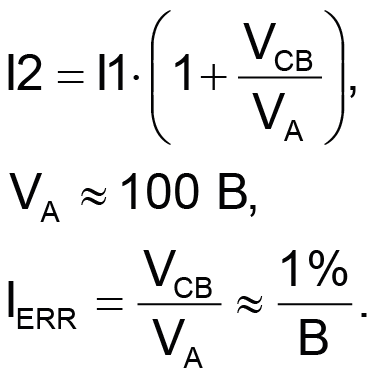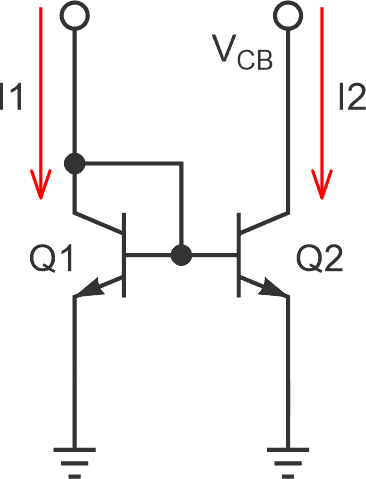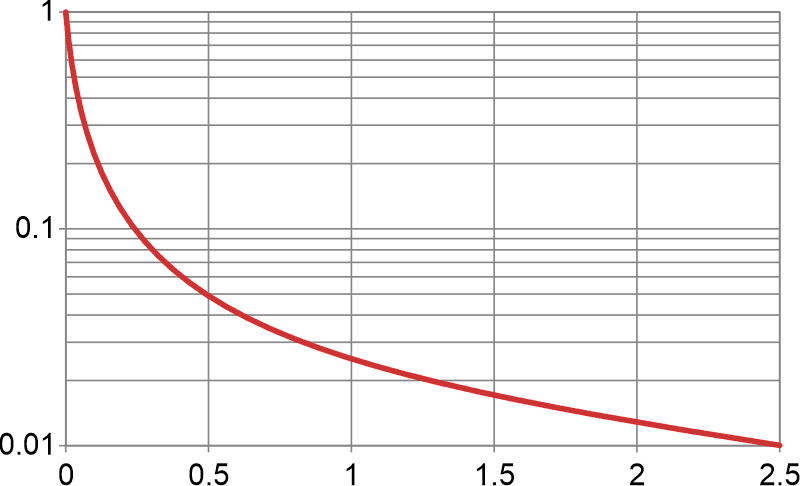It’s just a fact of life. A BJT wired in common emitter, even after compensating for the effects of device and temperature variations, still isn’t a perfect current source.
One of the flaws in the ointment is the Early effect of collector voltage on collector current. It can sometimes be estimated from datasheet parameters if output admittance (hOE) is specified (EE ~ hOE / test current). A representative value is 1% per volt. Figure 1 shows its mischief in action in the behavior of a simple current mirror, where:

If the two transistors are matched, I2 should equal I1. But instead, Q2’s collector current may increase by 1% per VCB volt. A double-digit VCB may create a double-digit percentage error. That would make for a rather foggy “mirror”!
 |
|
| Figure 1. | Current mirror without emitter degeneration. |
Fortunately, a simple trick for mitigating Early is well known to skilled practitioners of our art. (Please see the footnote). Emitter degeneration is based on an effect that’s 4000 times stronger than the effect of VCB on IC.
That’s the effect of VBE on collector current, and it can easily reduce EE by two orders of magnitude. Figure 2 shows how it works:

Equal resistors R added in series with both emitters will develop voltages VR = I1×R and I2×R that will be equal if the currents are equal. But if the currents differ (e.g., because of Early), then a VBE differential will appear… duh…
 |
|
| Figure 2. | Current mirror with emitter degeneration |
This is useful because the VBE differential will oppose the initial current differential, and the effect is large, even if VR is small. Figure 3 shows how dramatically this reduces IERR.
 |
|
| Figure 3. | A normalized Early effect (y-axis) versus emitter degeneration voltage VE = IA×R (x-axis). Note that just 50 mV reduces Early by 3:1. That’s indeed a “long way”! |
Footnote
One DI has an earlier conversation about current mirrors and the Early effect: “A two-way mirror – current mirror that is” (Ref. 1). In the grand tradition of editor Aalyia’s DI kitchen, frequent and expert commentator Ashutosh suggested how emitter degeneration could improve performance:
Regarding degen, i’ve found that a half volt at say 1 mA FS helps match the in and out currents much better even at a tenth of the current, even for totally randomly selected transistors. I suppose it is because the curves will be closer at smaller currents, so that even a 50 mV drop goes a long way
Ashutosh certainly nailed it! 50 mV does go a long (3:1) way!
Reference
- Woodward, Stephen. "Woodward A two-way mirror – current mirror that is."